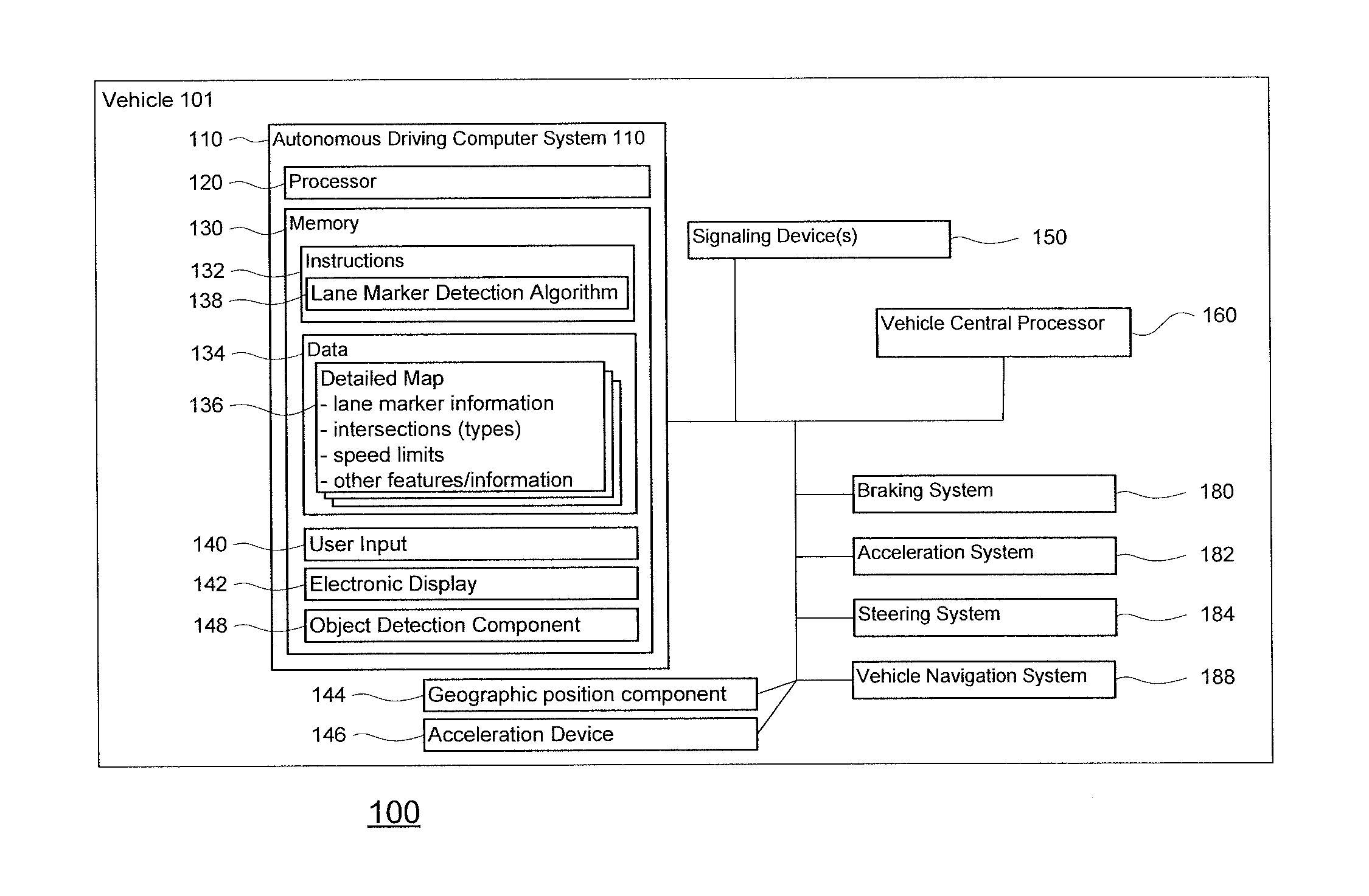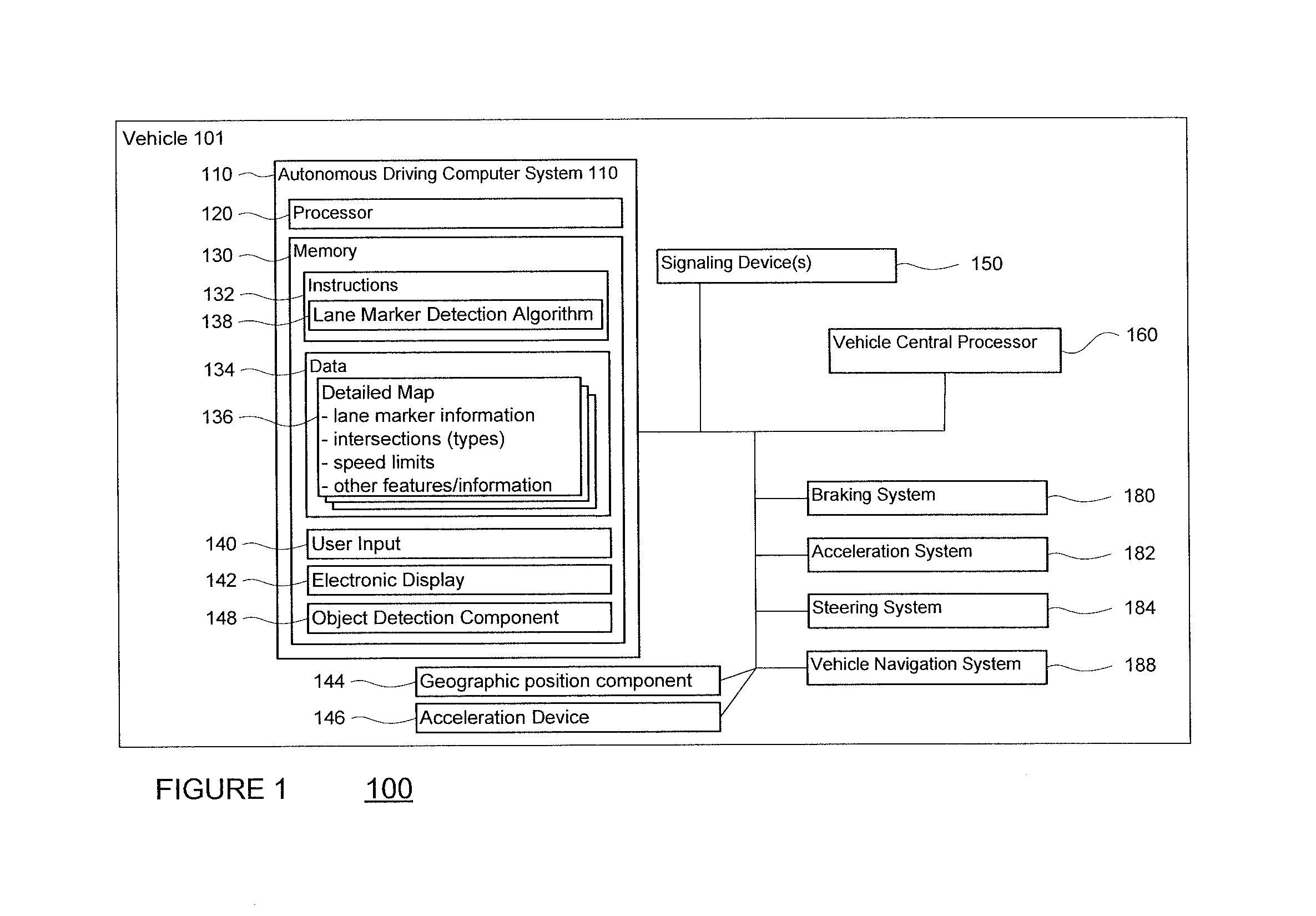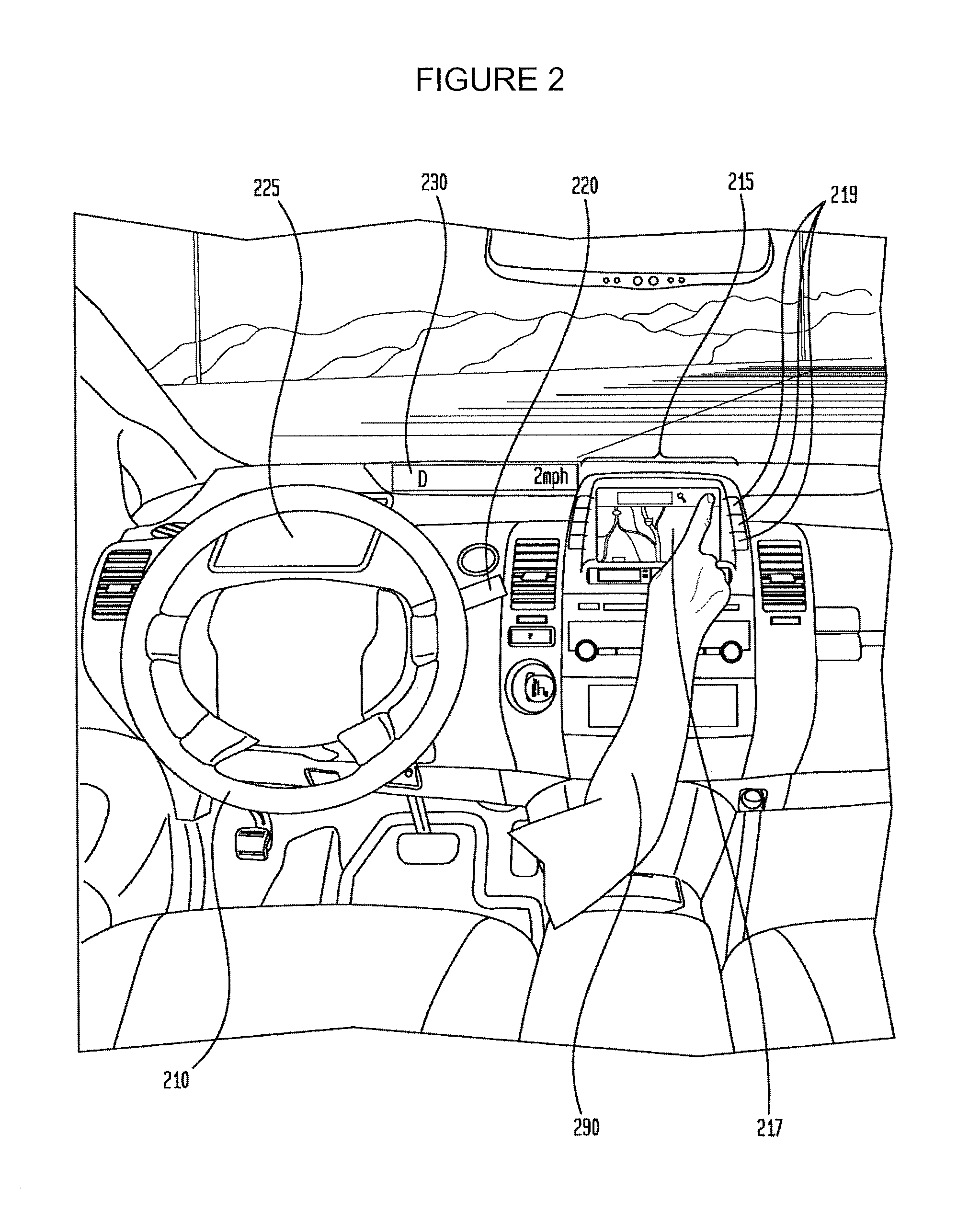Pedestrian notifications
a technology for pedestrians and vehicles, applied in the field of pedestrian notifications, can solve the problems of insufficient reassuring for pedestrians to stop a vehicle without these driver-initiated signals, and the inability of autonomous vehicles to directly communicate the future behavior of vehicles,
- Summary
- Abstract
- Description
- Claims
- Application Information
AI Technical Summary
Problems solved by technology
Method used
Image
Examples
Embodiment Construction
[0026]In one aspect of the disclosure, a computer 110 may maneuver a vehicle along a route, such as an autonomous driving mode without continuous input from a driver. The computer may receive data about the vehicle's environment collected by the vehicle's sensors. Using the data, the computer may identify an object in the vehicle's environment. The computer may then determine whether this object is likely to cross the roadway along which the vehicle's route travels. If not, the computer may identify other objects in the vehicle's environment from received sensor data and determine whether those other objects are likely to cross the roadway. In some examples, the computer may first determine whether the object is a pedestrian before determining whether the object is likely to cross the roadway.
[0027]If the computer identifies an object that is likely to cross the roadway, the computer may estimate a projected path of the object. The computer may then determine whether the projected p...
PUM
 Login to View More
Login to View More Abstract
Description
Claims
Application Information
 Login to View More
Login to View More - R&D
- Intellectual Property
- Life Sciences
- Materials
- Tech Scout
- Unparalleled Data Quality
- Higher Quality Content
- 60% Fewer Hallucinations
Browse by: Latest US Patents, China's latest patents, Technical Efficacy Thesaurus, Application Domain, Technology Topic, Popular Technical Reports.
© 2025 PatSnap. All rights reserved.Legal|Privacy policy|Modern Slavery Act Transparency Statement|Sitemap|About US| Contact US: help@patsnap.com



